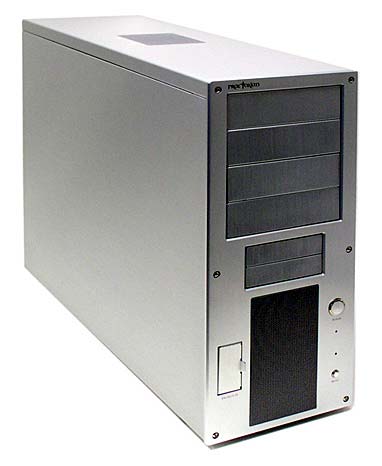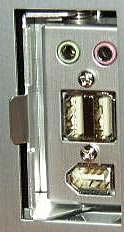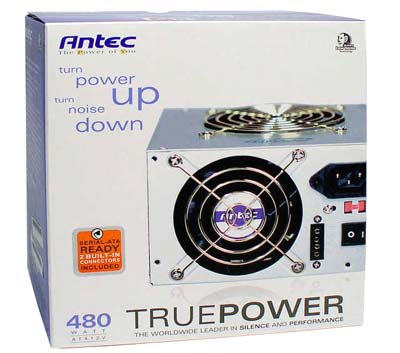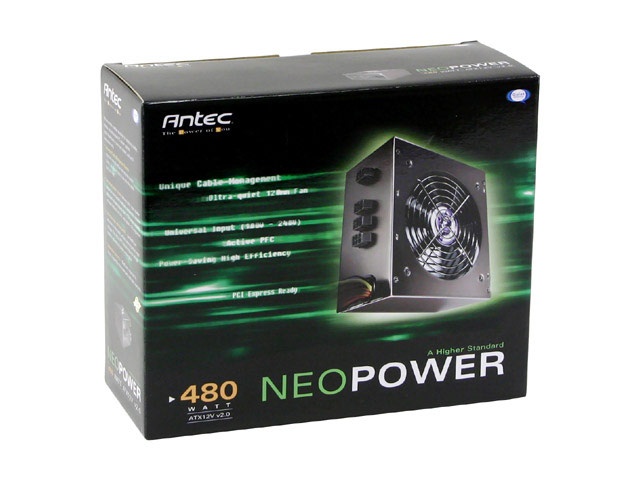High End Buyer's Guide - September 2004
by Wesley Fink on August 30, 2004 12:22 AM EST- Posted in
- Guides
Computer Case
Recommendation: Coolermaster Praetorian (PAC-T01-E1) SilverPrice: $114 shipped

While there are cheaper Coolermaster cases with Aluminum fronts and steel bodies, the Coolermaster All-Aluminum cases are still some of the best for build-quality that you will find anywhere. The Praetorian is a classic Coolermaster Aluminum mid-tower case with 10 drive bays - 4 hidden and 6 front accessible. Coolermaster still includes four additional fans for heat dissipation - 2 front fans, a top fan, and a rear exhaust fan. Due to the popularity of the case, we have also seen a decent $16 price drop in the past month.

There is also a sliding panel on the front protecting a great selection of essential front ports - 2 USB, firewire, headphone and mic. You will also find a handy removable motherboard tray for easier mounting and the case is a tool-less design for easy assembly. The build quality of the Coolermaster is superb, and the reinforced chassis makes the Praetorian stronger than most aluminum cases.
Power Supply
Recommendation: Antec True Power 480WPrice: $89 shipped

The new high-end video cards have even higher power requirements, so we have "upped" our recommendation a bit to Antec's True Power 480W PSU for $85 shipped. The Antec True Power series provides very consistent power to the rails and has performed very well in AnandTech power supply roundups. It provides extremely stable voltages, a good warranty, quiet operation, low operating temperature, and is a tried and true Power supply. The True Power series, in particular, is one of the most trusted power supplies among enthusiasts. While a good quality 350W or 400W power supply might do the job for processors and video cards just below the high-end, you will have the comfort of some reserve for the ever more power hungry processors and video cards. You will also enjoy rock solid stability with the top FX53 Athlon 64 combined with the power-hungry nVidia 6800 Ultra.
Alternative: Antec 480 watt 120mm fan ATX 12V v2.0 Model 'NeoPower'
Price: $124 shipped
The new Socket T boards include a 24-pin ATX power connector instead of the familiar 20-pin ATX on most current boards. While you can use a 20-pin connection in a pinch, the best choice for a new LGA 775 system is a power supply that complies with the ATX V 2.0 that specifies a 24-pin ATX connector. These power supplies are starting to appear in the market, but are still difficult to find. The Antec V2.0 Neopower is an ATX 2.0 480-watt power supply that provides the best of both worlds - a native 24-pin ATX connector plus a 24-to-20 pin adapter for other boards.

The Neopower 480 also provides customizable power leads to reduce case clutter and has quickly developed a reputation for quiet operation. This makes the Antec a good choice for either a top Athlon 64 system or an LGA 775 P4 system.
If you cannot find the lowest prices on the products that we've recommended on this page, it's because we don't list some of them in our RealTime pricing engine. Until we do, we suggest that you do an independent search online at the various vendors' web sites. Just pick and choose where you want to buy your products by looking for a vendor located under the "Vendor" heading.










53 Comments
View All Comments
decptt - Sunday, September 12, 2004 - link
Sep 11, No OC guide again -_-"I am waiting for Fink' comment about HS/HSF.
rbils - Wednesday, September 8, 2004 - link
Ignore me. I read the comments last week, and didn't bother to read them again before I posted today. Sorry!rbils - Wednesday, September 8, 2004 - link
I didn't notice in the article, but are you using the included (retail) heatsink and fan that ships with the AMD processor? If so, do you feel that it is adequate as installed? I've read so much lately about 3rd party CPU coolers and thermal compound that it has me questioning whether or not the items shipping with the retail CPU are sufficient.Wesley Fink - Thursday, September 2, 2004 - link
The 480W True Power has been more than adequate for my tests, BUT the OCZ 520W was my recommendation for the last Overclocking Guide. I personally believe the Antec 480W is more than adequate, but the OCZ 520W does provide an extra margin of safety - particularly if you plan to overclock your video card or seriously overclock the whole system. The OCZ 520 has the added advantage of both 24-pin and 20 pin compatability as well. If you can handle the OCZ price of $150 it is an excellent choice.As for coolers, water cooling and phase-change are outstanding, but specialized and expensive, and beyond the scope of our recommendations. I have had good success with the stock A64 cooler made by Ajigo, and it is MUCH better than past AMD coolers - even for some modest overclocking. If you want more, there are coolers that do a better job. My favorites are the Scythe Samurai, the Thermalright SLK948U, and the Thermaltake Silent Boost K8. The Gigabyte 3D Cooler Ultra GT is also great-looking, but it really doesn't add that much in the way of improved cooling over the stock fan. The Samurai, SLK948U, and Gigabyte are Universal HSF and will work on most sockets.
southernpac - Thursday, September 2, 2004 - link
Congradulations on a comprehensive and well thought out guide. I will very shortly be relying on it a lot. Two concerns: As #16 has testified to his 480W PSU being inadequite, I would like for AnandTech to comment on this (we are relying on your advise in making this purchase). I realize that nVidia has revised their power requirement downward, but only after a lot of critism. As I don't want any more heat in the case than is really necessary, SHOULD more than 480W be shown necessary, I would also like your view of OCZ's 520W PSU.The one hole in the review certainly appears to be the lack of a recommendation for a better than "decent" (read adequite) cooler. If there are "better solutions" available - the high-end system should have it. Heat is the enemy of electronics, so the best cooler is worth while, particularly at only about $50. However it's not that simple - hence the need for a recommendation. #44 for example advocates his Zalman CNPS7000B-Cu, but if you look at Zalman's own site info on this cooler, Zalman specifically disavows moving any system having an installed cooler weigning over 450g. The 7000B-Cu weighs 755g (50% over Zalman's own limit). Many high-end coolers have similar weight. The just released Gigabyte 3D Rocket heat pipe cooler has just reduced it's weight to ONLY 500g's - but is it still effective now that it's aluminium instead of copper? Wesley please, we need a recommendation! In spite of the above - a great guide! Bill
NoGodForMe - Thursday, September 2, 2004 - link
Great article.I'd be interested in seeing if the Thermalright XP-120 fits in the Asus AV8 and other AMD boards for the FX53.
And most of these products are still hard to find. I'm sure someone will say they can get them, but it's very hard to do. For example, find me a BFG 6800 Ultra OC.
southernpac - Thursday, September 2, 2004 - link
gimper48 - Thursday, September 2, 2004 - link
When is the next Overclocking Review?!!swampy11 - Wednesday, September 1, 2004 - link
I certainly agree with your picks for the Hi-end set-up, but here is my question. With the new PCI-Express just around the corner and the supposed "horsepower" gain by this new architecture, should I jump in now with your suggested Hi-end recommendation or wait until the newer GPU and MB bear fruit.... probably fourth quarter?Thanks
`swamp
Uff - Wednesday, September 1, 2004 - link
Personally, I had quite a negative experience with my stock cooler, as soon as I locked the cam lever, it bent my motherboard just enough to make my RAM not make contact with the slots in the middle, resulting in failed boots. In addition to that, while it did keep my cpu temps at reasonable levels they were far from perfect.2 days later i received my Zalman 7000B-Cu and my temps dropped over 10C even if the cooler was running in silent mode (which is practically inaudible as opposed to the level of noise you get with the retail HSF).
While the stock cooler might do its job (barely), this was, after all, a high-end guide, and there's nothing high-end about that HSF.